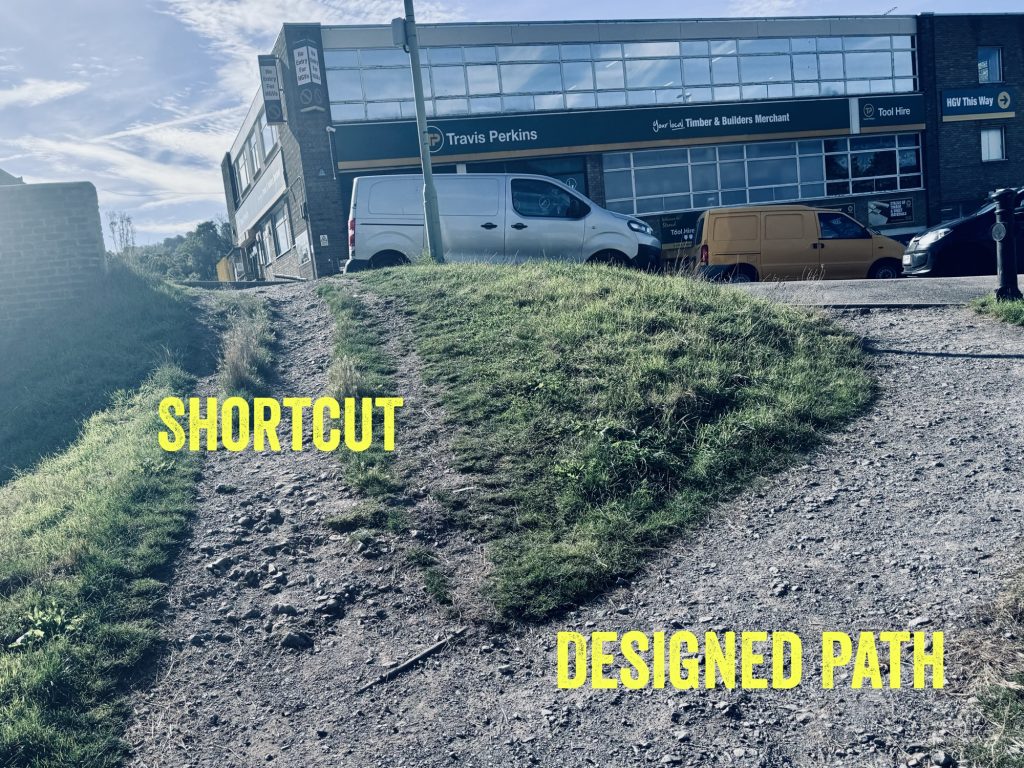
Mostly because it is so aggravating, this is about desire paths and design. For some reason, desire paths are viewed as a clear proof of the foolishness of design and standards. Look how the crowd forms a path, made from the unity of their shared desires and how that is better than the path design and built by professionals.
It’s aggravating because what the paths show is not so much the brilliance of crowds as the laziness of capacities.
The picture above is a path I walk regularly when going into my home town of Stroud. It’s where the canal path connects to the road into town. There are two paths. The designed path and the desire path. Yet it’s not really a desire path in some broad social sense: it’s a shortcut for some people who can walk up the rocky surface. It is steeper and rougher so uses more personal energy and effort than the designed path.
So should (as is often argued) this path be formalised? Did the professionals fail?
No.
It’s a shortcut.
It’s not accessible. It’s ableism.
People use it because they have capacity and privilege. Rather than take a moment to follow the curve to the right, some people walk straight up. The designed path is used by people with mobility issues and contextual impairments. While watching the paths, the designed path is used by older people and parents with push chairs. It is meeting its purpose. Meanwhile young people and unimpaired people climbed the shortcut.
The designed path offers capability to people with less capacity and privilege. It’s the right solution for social inclusion and public realm design.
Just because some people can take shortcuts is no reason to build a society around shortcuts. Design for equity is important. The standards and regulations that defined the designed path offer civic capability to all.